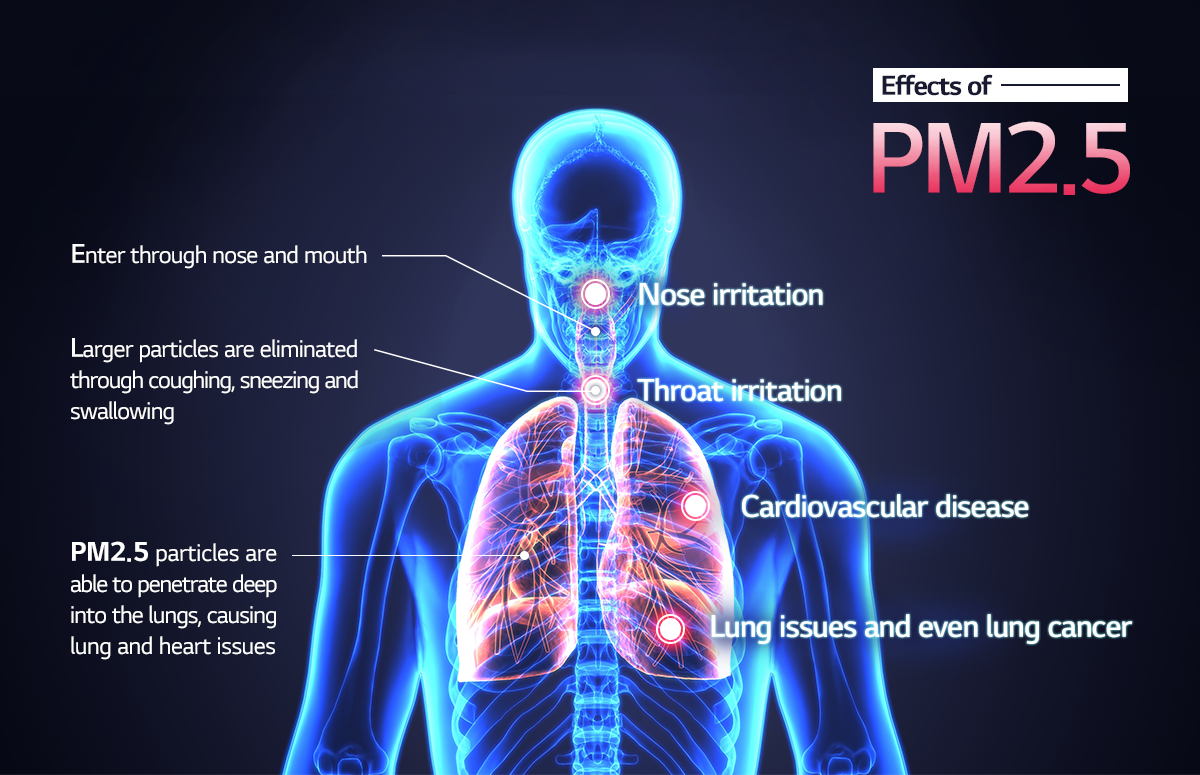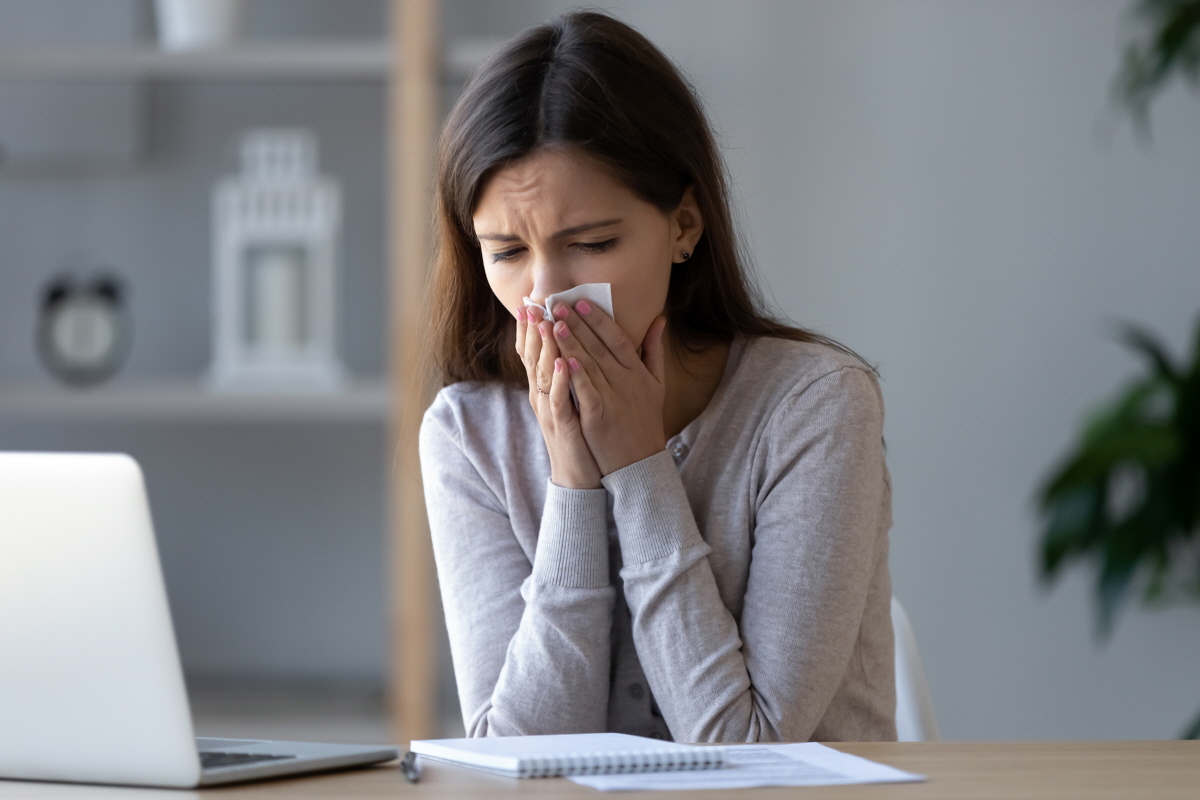Air pollution has long been a concern for people all over the world. However, concerns about a particular fine-particle dust have been growing significantly in recent years. The term ‘fine dust’ refers to dust with particles that have a diameter less than 2.5 micrometers, or PM2.5. Fine dust has been linked to serious ailments and medical conditions in recent years and it is important to protect ourselves against this fine dust, especially in environments where it is in high concentration. We would like to look deeper into the sources of fine dust and how we can safeguard ourselves from its many dangers.
 How PM2.5 effects our bodies
How PM2.5 effects our bodies
The Dangers of Fine Dust
Fine dust is minute, and that is exactly why exposure to it is so dangerous. At less than 2.5 micrometers, PM2.5 particles are so small that they are able to bypass cilia in the nose and throat and absorb easily into the lungs and bloodstream. But how does this exposure to PM2.5 particles affect us? These small particles can cause ailments such as coughing, shortness of breath and irritation of the eye, nose and throat. Even more serious conditions including asthma, bronchitis and respiratory issues are also attributed to PM2.5 exposure. In addition, PM2.5 particles are also linked to diseases and illnesses such as heart attack, stroke, cancer and birth defects. Long term exposure is much more dangerous for children and those suffering from heart and lung disease.
Fine Dust in the Air
While the dangers of fine dust exposure are more prominent in the media in recent years, it is more common than many of us realize. Sources of PM2.5 fine dust are all around us both in urban and rural environments. Emissions from cars, trucks, buses and power plants cause high concentrations of fine dust in urban areas. But burning wood and coal, including natural wildfires, also contribute to the distribution of PM2.5 particles as well. PM2.5 fine dust is able to travel long distances in the air and can impact environments that are miles away from the source.
 PM2.5 in the home can also be a source of discomfort and health issues
PM2.5 in the home can also be a source of discomfort and health issues
Fine Dust at Home
Unfortunately, fine dust is present in our homes as well, but there are some ways to make the home environment safer from PM2.5. Thorough ventilation in your house, particularly when cooking, can help prevent the concentration of fine dust. Avoiding excessive burning of candles that produce high volumes of smoke can also reduce the amount of PM2.5 particles. In order to maintain a healthy home environment, installing an air purifier with HEPA and carbon filters will help remove fine dust from the air and improve air quality. You can also keep tabs on the quality of air in your home with an air quality monitor specialized for PM2.5.
While there are steps being taken to reduce pollution and contaminants in the air, PM2.5 is still an increasing issue the world over. The effects of this pollutant are damaging our health and it is important to protect yourself from PM2.5 exposure, especially in the home. We look forward to a day when contaminants such as PM2.5 are no longer a concern for so many people, but until then, we encourage everyone to stay healthy and safe.
Allergic ill female worker blowing running nose got flu caught cold sneezing in tissue at workplace, sick teen girl having allergy symptoms coughing holding handkerchief at work, hay fever concept


































